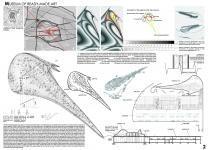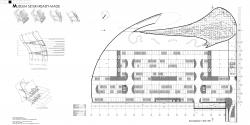Museum of Ready-made Art. _________________________
In my opinion, in todays world dynamism and mobility are factors necessary to create good and timeless architecture. These features made me leave the traditional way of perceiving architectural facility as a constant form. In this context, it is natural to design the building, with taking into account the idea of complete freedom of creating the functional space. Mobile building has a chance to change the philosophy of concerning the environment and give a new meaning to the concept of the working place. In my museum, the main aim I set myself was to create multifunctional exhibition space, with the possibility of any interior design. During the realisation of my idea I reached the effect of a direct interaction between the space and visitors or artists. In my case, the starting point for the museum project was Lyapunov fractal. After its analysis, I have created, internal walls and the functional concept of the facility. This process was based on the work environment using the principle of scripting shape.
While creating the project I was trying to offer solutions to arrange free space. I decided to use the system of walls moving vertically, and hiding in the floor of the exhibition hall. It allows to change the height of the walls, which results in unique sizes of each zone, passages and the whole interior. In addition, I enable artists to control the light, interacting with walls of glass that has transparency properties also depending on their inventiveness. For this purpose, I use walls with inner layers that are able to change their transparency qualities and independent, mobile layer of LEDs. With these solutions, it is possible to display any images, videos and illumination over the entire surface of all walls, which would have the role of screens and the background ready for any form of arrangement. Moreover I use an external, movable steel layer fastened to the main structure through top-down hooks that has option of sliding. However the most important element of the whole system, is the human factor. Thanks to the microchips placed in the tickets, unaffecting the comfort of movement, the visitor controls the sensors in the walls. Depending on the program selected, you can hide or eject the walls at any height, make them become more or less transparent, or display images. The entire building follows the solutions applied in the interior.
In the facades I designed a system of windows located in sixteen horizontal strips surrounding the entire building. Each strip is divided into a half meter long windows. Their opening/closing, for example, may reflect the movement of visitors or position of the exhibits, and adjusts to changing weather conditions or the need for light in the interior. Dynamic facade could be described as interactive art. Ready-made art. With a double layer of semi-transparent membranes, light entering the interior is fuzzy and does not interfere with the reception of art. This building is a part of the current innovations in the architecture and refers to the ever-accelerating technology development. Thanks to the vertically sliding walls in the building we can quickly create an open space by completely hiding them in the floor. This introduces new possibilities of using the facility for other functions such as concerts, happenings, workshops, and multimedia projections. Today, many aspects of life are dynamically changing and requires our ability of continuous adaptation. For this reason, the space we create around ourselves and that we live in, should be equally dynamic and mobile. Architecture shapes our attitudes, our way of answering the reality. Since we know that it has such a strong influence on us, we should work on it with a similar effect. When we discover that a building is dependent on us, it appears that anyone can be a creator of the surrounding space. An environment created that way is fully subordinated to our needs. This gives single person the freedom to make decisions, which effects are visible immediately. The movement of visitors is read by the building and is reflected also on the facade, through the window openings.
Summing up all the components forming the building, we can say that there is a fourth dimension of architecture – time. It is a major factor that has influence on the variability and mobility of the facade and interior walls. Technology can show its full potential due to the interaction between visitors/artists and the time in which a person is in a particular place. I would say that the exhibition space is waiting for you to arrange it at any time. Inside, we have an equal chance to become part of one living organism. The dynamism of the Ready-made Art Museum building is shown on several levels: in its functioning, in the visual aspect and in the interior design. You could say that it blurs the boundary between the building and its user.
2009
Architect: Sebastian Szarek
Museum of Ready-made Art by Sebastian Szarek in Poland won the WA Award Cycle 8. Please find below the WA Award poster for this project.
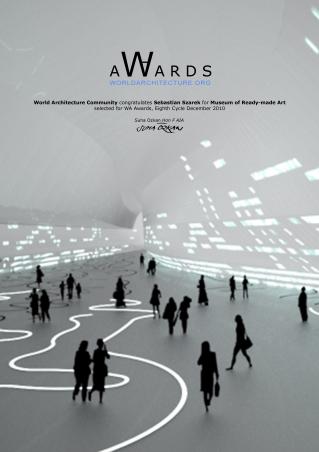
Downloaded 206 times.
Favorited 3 times
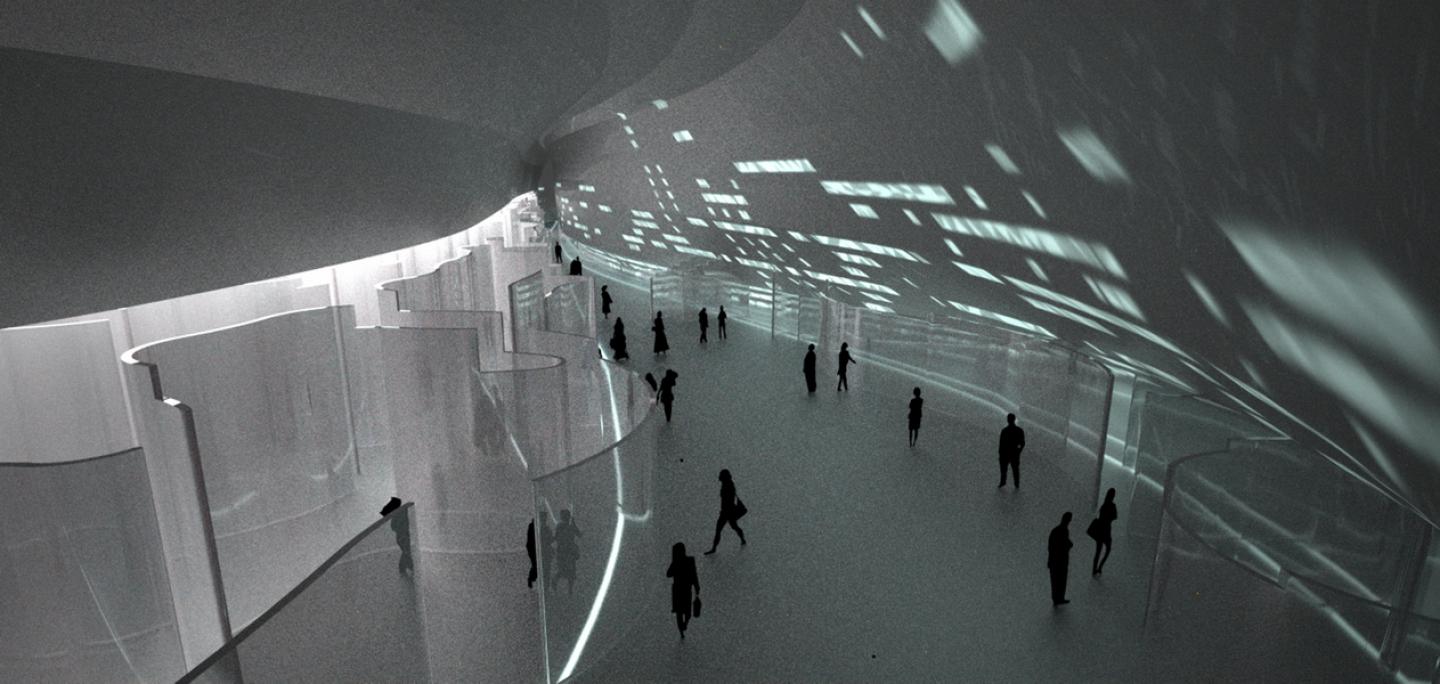
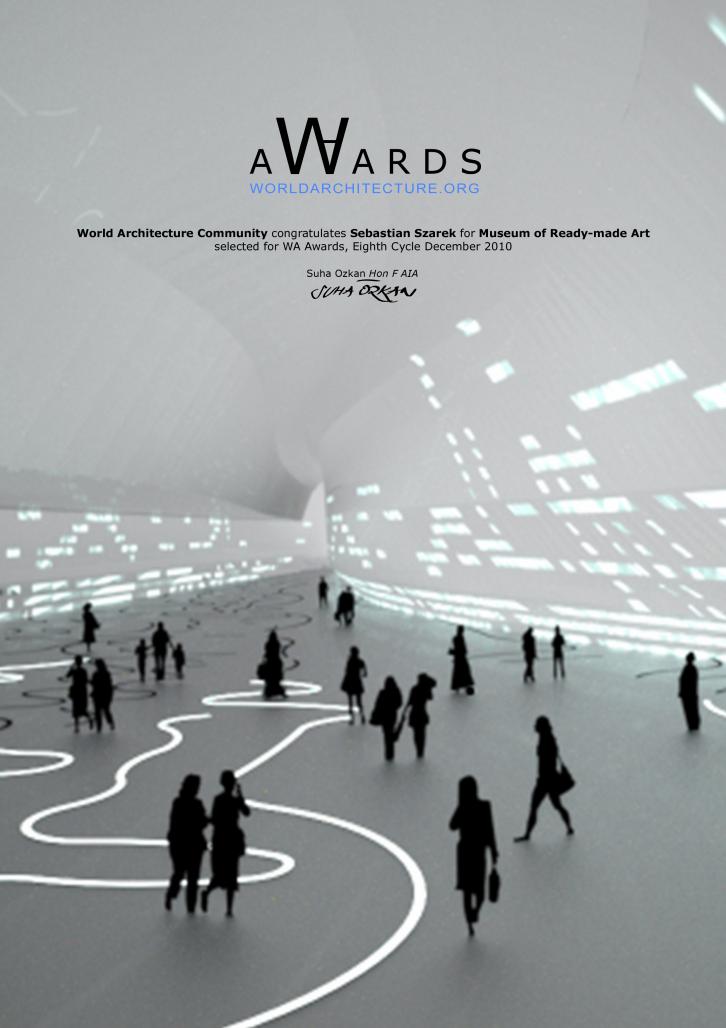

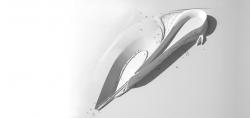
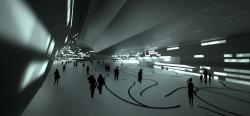


.jpg)
